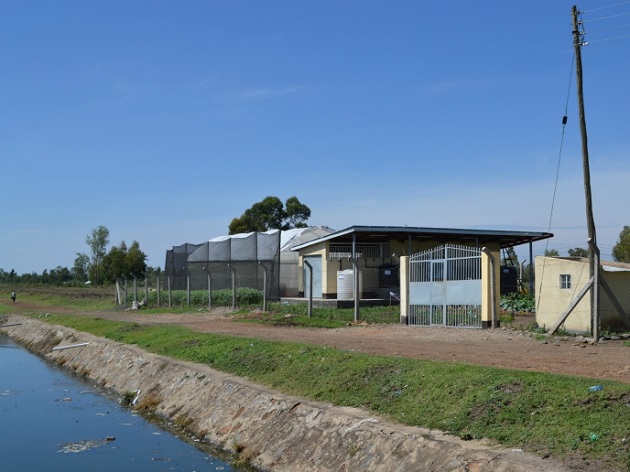
News
Industry update
Management
Education
Sustainability
Lake Victoria RAS pilot aims to get more women into aquaculture
April 21, 2020 By Nestor Arellano
 VicInAqua pilot RAS project. (Image courtesy of Jan Hoinkis)
VicInAqua pilot RAS project. (Image courtesy of Jan Hoinkis) Shared by East African countries Kenya, Tanzania, and Uganda and covering an area of over 68,800 square kilometers, Lake Victoria is considered to be the world’s largest inland fishery environment.
The lake holds a huge potential of solving the food production challenges of the region. An ongoing recirculating aquaculture system (RAS) pilot program in Lake Victoria aims not only to optimize the use of the lake’s water for agriculture but also get more women involved in a promising aquaculture sector, according to the European Commission.
VicInAqua is a medium-scale research project funded by the European Union’s Horizon 2020 program. Eleven partners from seven European and African countries are working together through the project to develop an integrated approach to water management. The project is also using treated domestic wastewater to supply a RAS facility in the Lake Victoria region.
Getting more women involved
“Thanks to partnership with DALF (Department of Agriculture, Irrigation, Livestock and Fisheries of Kisumu County, Kenya), the pilot plant will be maintained and operated as a training and demonstration facility, constituting a sustainable legacy,” said project coordinator Jan Hoinkis of Karlsruhe University of Applied Sciences.
The team has prepared handbooks to help stakeholders with daily use and maintenance of the technologies.
MBR and smart technology
“The pilot built in Kisumu, Kenya, combines an innovative membrane bioreactor (MBR), utilising commercial and custom-developed anti-fouling membranes with a RAS,” according to Hoinkis. “The RAS, located next to a wastewater stabilization pond, can recirculate 90-95 per cent of its water volume.”
Print this page